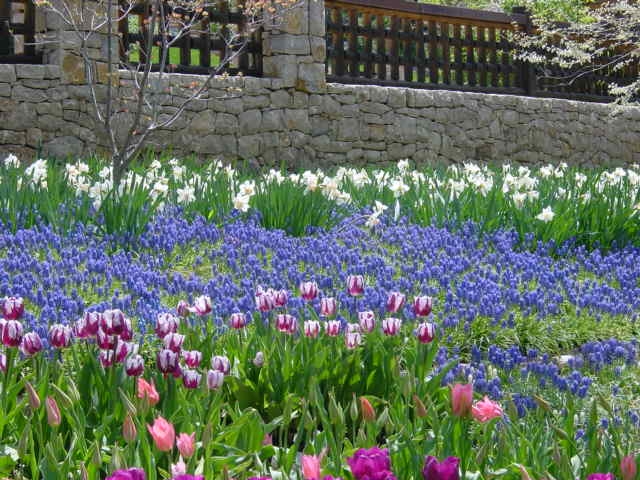Spring Bulbs for Fall Planting
August is here! For all the plant people out there, you have recently received a bulb catalog from a company you previously purchased from in the past. How can it be time to order spring bulbs already? Well, it is simple: they need to be at your door ready to plant before it is too cold to work the ground.
Spring bulbs require a cold treatment to flower. This means that planting them before temperatures get below 45 °F is crucial to the success of your flowers. Cold treatment is essential to the process, whether you like daffodils, snowdrops, tulips, lilies, peonies, or irises. Historically, the first frost here in Northeast Kansas has been around the third week of October, but this doesn’t mean you can’t plant after that date. Although soil temperatures depend on the ambient air temperature, soil temperatures do not change as fast as the air temperature.
A common misconception about cold treatments is placing bulbs you just received into your refrigerator while they are still packaged in the netting they arrived in. This is not the proper way to chill these plants. They also need to be wet and in a dark place. That’s why we plant them in the ground for the winter. Even though we consider these plants to be dormant, they are still growing.
One consideration to make before ordering your bulbs for fall planting is to check to make sure you can keep your newly planted bulbs moist during the winter. As a rule of thumb, bulbs must be planted twice as deep as the bulb is wide. This means if the bulb is 2.5 inches across, the bulb needs to be planted 5 inches into the ground. Covering your planting with mulch can help keep moisture in the soil profile. Mulch serves another purpose: protecting your bulbs from squirrels. It isn’t foolproof; however, it will mitigate how many bulbs get dug up by these rodents. Planting at the proper depth and a healthy mulch layer in the landscape can save your flowers during long stretches of no precipitation and unwelcome rodents.
If you miss the fall planting season, there is still an opportunity to purchase spring flowering bulbs out of season. Companies that can provide spring-blooming flowers year-round for floral arrangements will individually pot bulbs and place them in a refrigerated area. These bulbs mustn’t dry out, so companies will have staff water them during the cold treatment. Some of these companies sell their bulbs in the early spring as “pre-chilled” bulbs. Pre-chilled bulbs will bloom in the spring after a short establishment period.
After a long, dreary winter, spring bulbs can be such a relief to the eyes. Not to mention the landscape value when it comes to food for early pollinators. The number of colors, shapes, and bloom times currently on the market can make anyone empty out all their pockets to get the largest variety possible. However, improper planning can lead to a last-minute scramble in the clearance aisle at the department store with mixed results.
Not ordering your spring bulbs right now won’t be the end of the world. Finding the bulbs you planted in years past and lifting, dividing, and planting them in new places has been a tried-and-true method for centuries. Still, being on top of the process early can transport you to a new world of vibrant color that can last all spring.
Markis Hill, Horticulture Agent Ornamentals and Turf, 2024
Have questions? The Garden Hotline is staffed by trained EMG volunteers and Extension staff who will assist you with questions.
Phone: (913) 715-7050
Email: garden.help@jocogov.org
